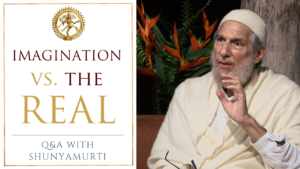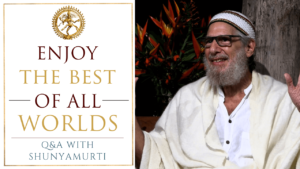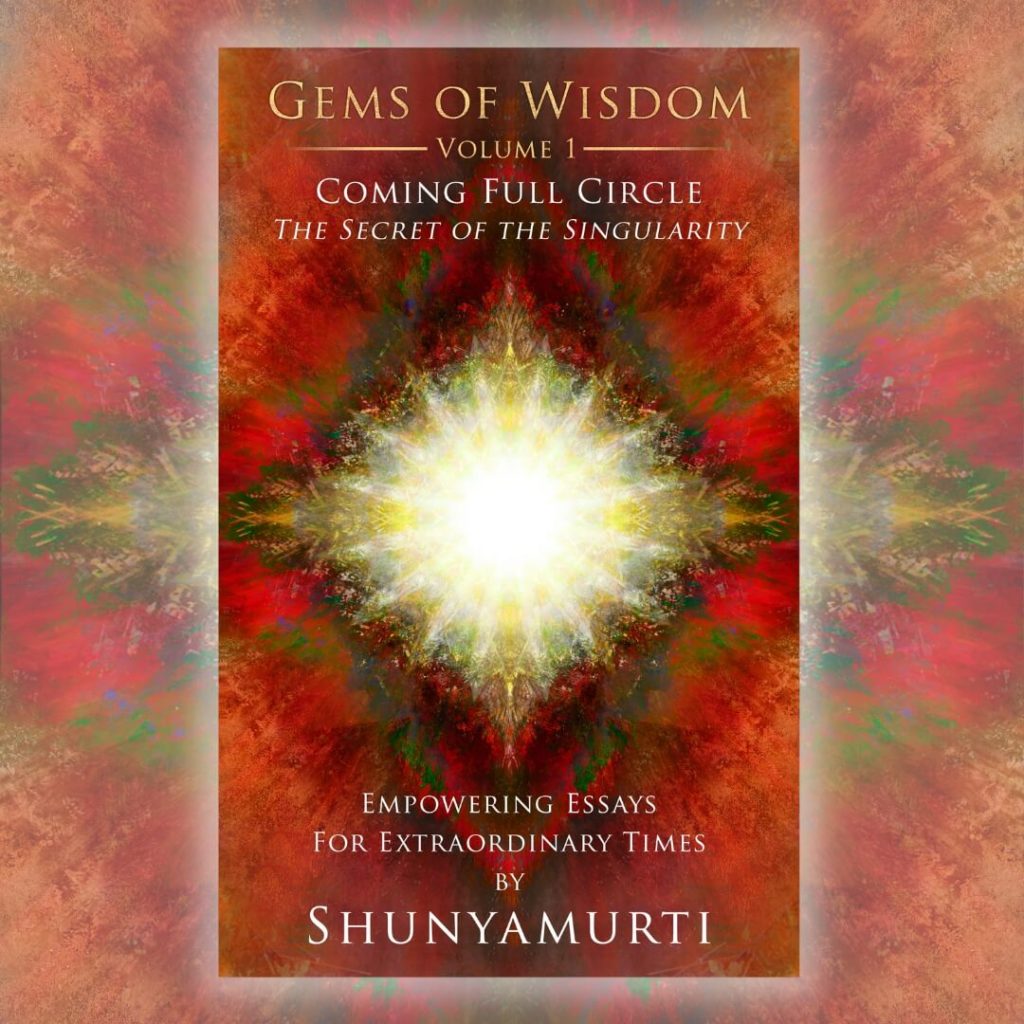From Waste Management to Resource Management at the Sat Yoga Ashram, Costa Rica
What Do You See?
Durgá poses the question, first to the audience of workers and later, separately, to the ashram’s residents. The occasions, intended to heighten awareness of how much we accumulate and “where it all goes,” is but one facet of Sat Yoga’s ongoing efforts to minimize its participation in the refuse crisis that is suffocating – and killing — the world.
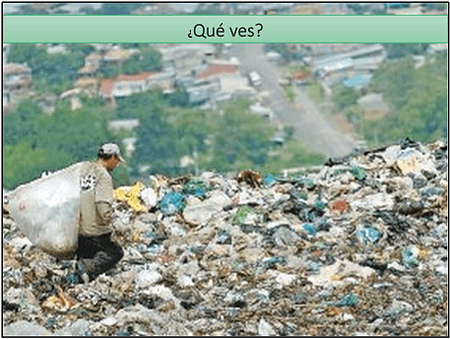
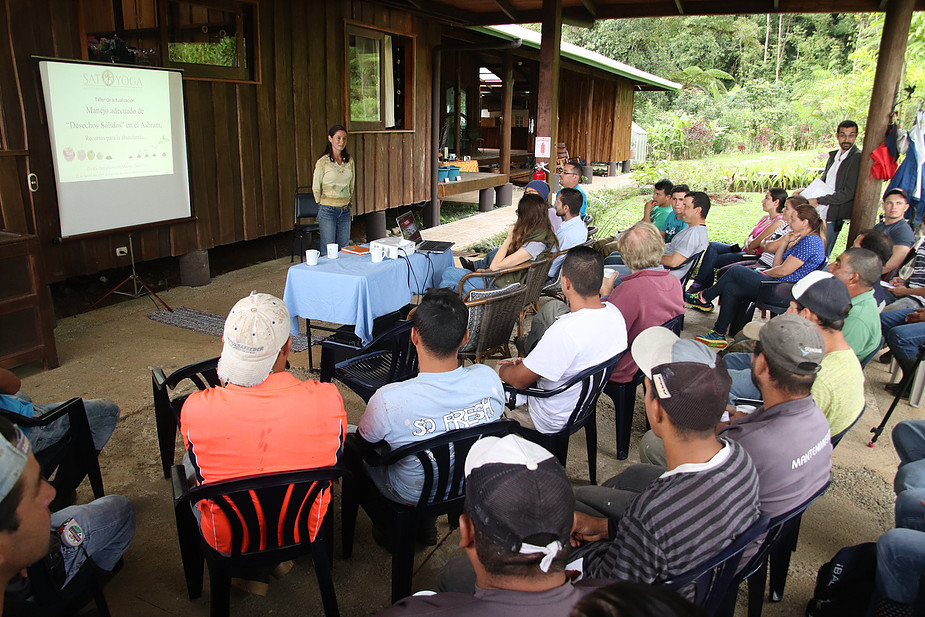
“Garbage,” responded one.
“A town living under it,” answered another.
“A mirror of contemporary culture,” answered a third.
My mind impulsively leaped back to a book we’d read a decade ago at Sat Yoga, Opening the Hand of Thought, by Kosho Uchiyama. In it, the question was posed regarding a sheet of paper. “What do you see?”
“You see the sheet of paper, sure,” wrote Uchiyama.
Do you see the fallen tree from which the wood to make the paper was derived? Do you see the seed from which the tree grew? Do you see the clouds from where the rain descended to water the seeds? Do you see the invisible earthworms that provided nutrients to the tree’s roots and the Sun that provided energy from the Cosmos? Do you see the lumberjack who cut down the tree, the family he loves and struggles to support, the lunch he ate? Do you see the investors who envisioned the paper mill that produced the sheet of paper? And so the questions go on and on. Indra’s net. Do you see the interconnectedness of everything? Nothing is just what appears to the eye.
So what do we see when we look at a heaping garbage dump? When viewed from the broader perspective of a Zen monk, the mind races, never short for answers. Do you see the distant refinery that made possible the energy and necessary raw material to manufacture the metal, plastic and paper waste? Do you see the presentations in the boardrooms advocating for easy disposal of the cheap wrapping of a company’s products? Do you see the indifference of the people that threw this garbage into ten thousand wastebaskets?
“You’re all correct,” replies Durgá who draws my attention back from its wanderings, “but do you see the valuable resource?”
Silence descended on the group as it digested the implications of regular garbage, a plague to the world, becoming a resource.
Durgá then proceeded to share many practical examples of how “the generation of trash” can be avoided and minimized; refuse can be reused, repaired or recycled and ultimately in many cases, reinvented.
Plastic bottles can be cut into thin strips and converted into useful string for supporting vines. Plastic gallon containers can be reutilized for planting pots, storage canisters or slow-drip watering cans. Damp paper can serve as food for worms, making excellent fertilizer. A simple homemade hand press can crush flat aluminum cans for storage and recycling.
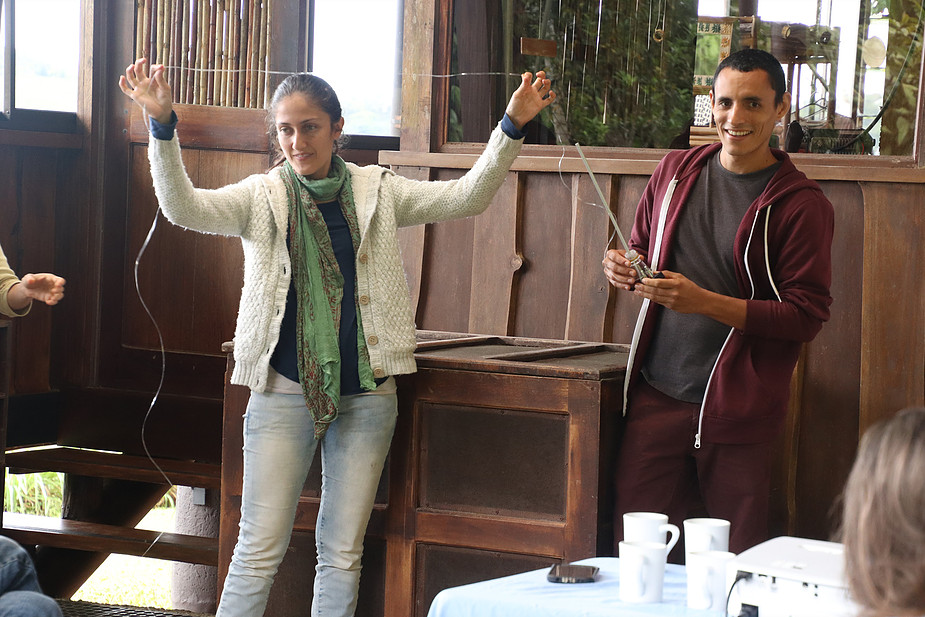
Inevitably Sat Yoga produces a broad range of detritus from flashlight batteries and computer monitors to paint cans and food wrappers. For a few years now everything – but everything! — the community has discarded has been meticulously placed in the appropriate bin, weighed, tabulated and discarded or stored for future use appropriately.
Durgá shared the statistics about the community’s waste.
On average, an ashram resident generates 1 kg. of waste a day. 90% is organic waste – kitchen scraps and garden cuttings – that are used for worm fertilizer or mulch. The little that can’t be recycled must be stored and hauled out once a year. This amounts to about 50 grams per resident per day.
In contrast, the average resident of the Central Valley generates and discards 20 times more trash daily, about 1 kg (2.2 lbs.) of material that’s mostly buried in landfills.
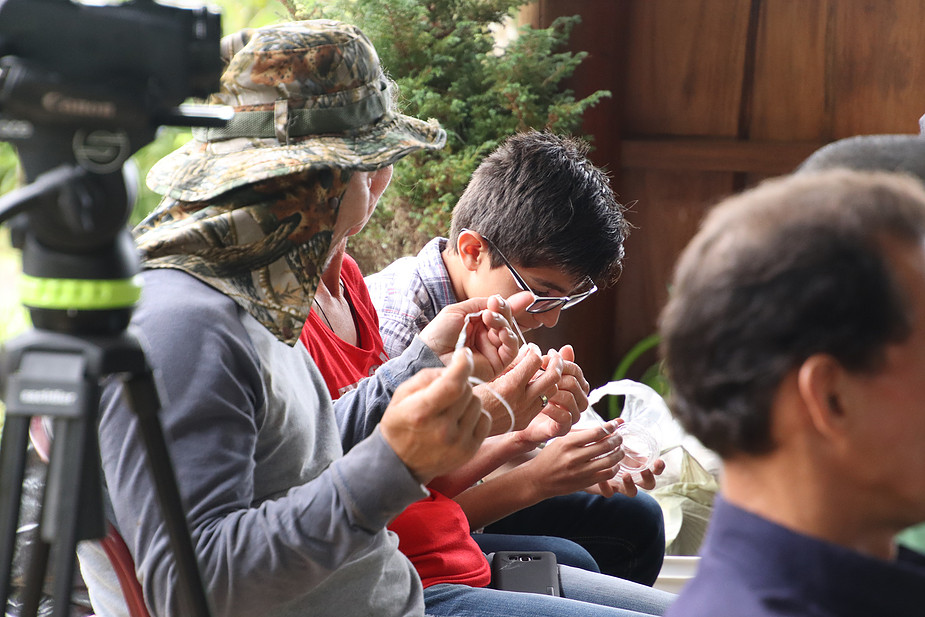
New approaches were presented about a problem that few had pondered. For the ashram’s workers who live in remote villages where no centralized garbage collection exists, trash is an imposition dealt with by burning or burial in their backyards. Few had considered, in school or within the context of their communities, the implications of their decisions as consumers. For ashram nivassis (residents), the occasion provoked discussion as to how we choose to live and the responsibility we bear as stewards of the planet.
Do you see a fetid civilization burying itself in its own profligate waste?
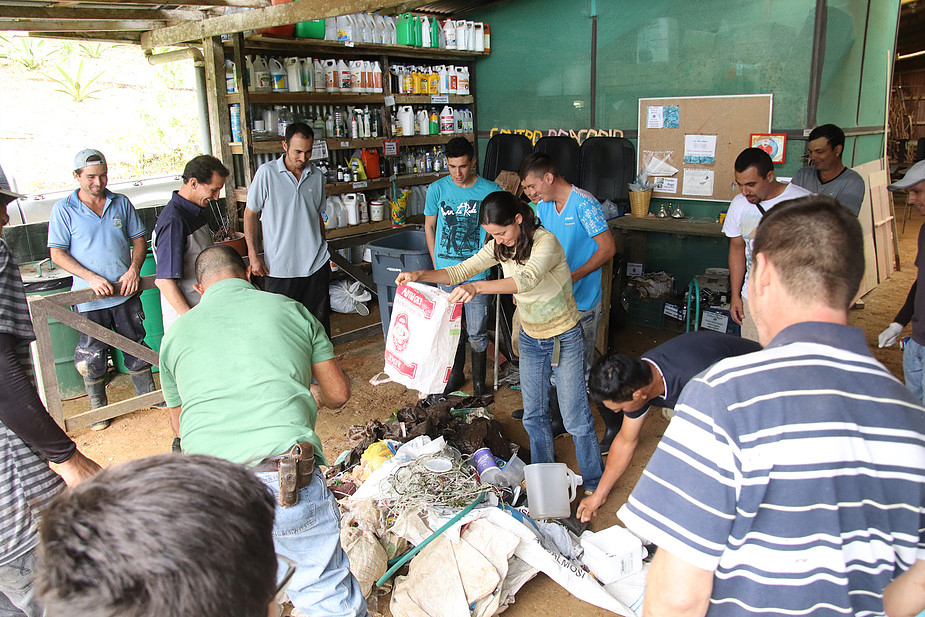
As Sat Yogis we care deeply about what we see. We see the wisdom of reconsidering whether to purchase items we’d once taken for granted. We see that we can reutilize much of what we’d once thrown out. We see the sense of recycling what refuse we can.
We see we can re-dream that which we see as objects out there in the physical realm. We equally know we have the power within ourselves to re-dream that what we can’t see – our thoughts, attitudes, relations and the impact of consciousness upon the world. We see our responsibility for creating the world we want to share with others.
Can you see too?


